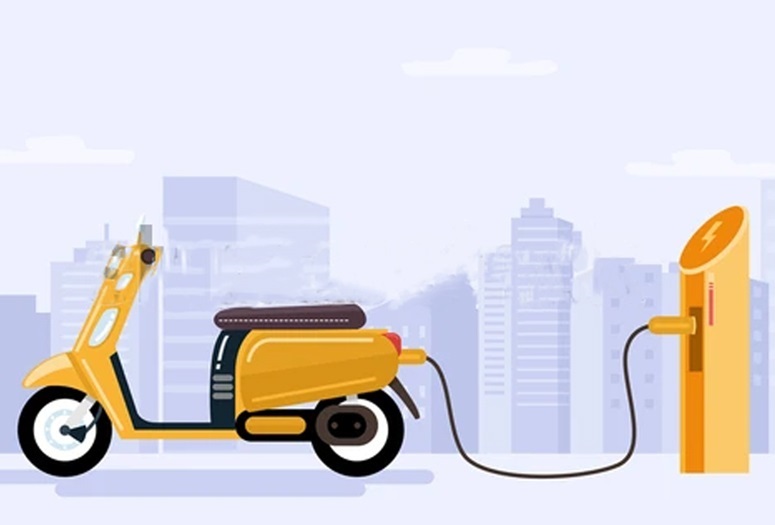Safety Tips for Charging Electric Scooters at Home
Electric scooters are gaining traction as a preferred mode of urban transportation due to comfort and eco-friendly nature. These scooters offer an efficient alternative for commuters, college students, and working professionals.
However, as with any electronic device, safety is paramount. Electric scooters rely on lithium-ion batteries that require specific care to avoid potential hazards. Improper charging practices can lead to severe consequences, including fires and explosions. This guide explains the risks of improper charging and provides tips for safe charging at home.
Can Electric Scooters Be Charged at Home?
Yes, electric scooters can be easily charged at home, and it’s one of the most convenient options for maintaining your scooter’s battery. With a standard electrical outlet, you can safely charge your scooter as long as you follow the recommended safety guidelines.
It is important to use the charger provided by the manufacturer and avoid overcharging or charging in unsuitable environments like wet areas.
By following the safety tips mentioned in this guide, such as using a dedicated charging area and ensuring proper ventilation, you can safely charge your electric scooter at home without any risks.
How to Choose the Right Charging Location for Electric Scooter
Ventilated Charging Spot
Select a proper well ventilated area for charging your electric scooter, to reduce heat generated at some stages in charging. Avoid enclosed spaces with poor air flow to prevent potential risk.
Fire Safety
Ensure the charging area is separated from flammable materials and sources of ignition. It’s smart to have a fire extinguisher close by as a precautionary measure.
How to charge electric scooter at home ?
Use the Original Charger
Always use the charger provided by the scooter’s manufacturer. Third-party chargers won’t be well suited and can have safety risks.
Avoid Water
Keep electric scooter and charger far from water to prevent electric damage. Avoid charging electric vehicle in wet areas or near water.
Inspect the Charger
Before each use, test the charger for any signs of harm, inclusive of frayed wires or loose connections. Do not use a damaged charger.
Avoid Overcharging
Overcharging considerably reduce the battery’s lifespan and lead to safety risks. Refer to scooter’s guide for specific charging recommendations.
Charging Time
Different models have different charging times. Stick to the suggested duration to keep away from overcharging and harming battery capacity. To help track e-bike’s charging, Joy e-bike offers models with a Battery Management System (BMS). This system protects the battery from overheating and overcharging.
Charging Environment
Maintain a clean, clutter-free charging area to prevent overheating and reduce fire risks.
Child and Pet Safety
Keep children and pets away from the charging place to prevent accidents with the scooter or charger.
Check out the different models offered by Joy e-bike like unbreakable Mihos, Wolf +, Gen Next Nanu +, Wolf Eco and Gen Next Nanu eco, all equipped with a reliable battery management system (BMS) to ease your charging times.
Understanding the Risks of Improper Charging & Potential Hazards
Charging an electric scooter incorrectly can bring some serious protection issues. Incorrect practices, like overcharging or using damaged chargers, can shorten the battery’s lifespan. These practices are also very risky. A compromised battery may additionally affect the scooter’s performance and range. It is crucial to follow proper charging practices.
Common Mistakes
Few common mistakes can result in unsafe charging problems:
Overcharging: Many users mistakenly consider charging their scooter fully after every experience as important. However, shallow charging your e-bike often is actually good for your battery’s health.
Using Damaged Chargers: Using chargers with damaged wires or free connections can be dangerous and result in shocks or short circuits.
Charging in Unsafe Environments: Charging in regions prone to moisture or excessive temperatures will increase the danger of battery damage.
Myth-Busting
A common myth is that electric-powered scooter batteries must be fully charged after every use. In truth, shallow charging cycles are more useful for the battery’s durability than total discharges. Understanding this can help you maintain a more healthy battery and safer charging routine.
Charging Your Electric Scooter in Different Living Situations
Apartments and Flats
In residences, select a dedicated charging area far away from flammable materials and make sure it’s well-ventilated.
Houses with Garages
Garages is the best for charging. They are well-ventilated and free from mess. Keep the electric scooter away from flammable materials like wood, gas or paint.
Outdoor Charging
Charging outside is not encouraged due to unpredictable climate conditions. Rain, snow, or intense temperatures damage the battery or charger.
Should You Create a Dedicated Charging Station at Home?

Pros and Cons
A dedicated charging station gives a secure and organised area for charging. It facilitates streamlining the process however includes an initial setup cost.
Safety Considerations
If opting for a dedicated charging station, ensure it adheres to safety guidelines. Use fire-resistant materials and arrange adequate airflow.
Tips for Designing a Charging Station
Designate a selected area for charging, like a corner in your garage. Consider installing a shelf for your charger and accessories.
Cost-Benefit Analysis
Evaluate the price of putting in a charging station in comparison to the safety and convenience benefits it gives. A well-designed station can enhance both safety and maintenance.
Emergency Procedures
What to do in case of fire?
If a fire occurs while charging, turn off the main switch. Unplug the charger if the fire is at the charger’s end. Then, evacuate the area immediately. Contact the fireplace branch as soon as possible.
Battery Safety
If you notice abnormalities like swelling or overheating of the battery, stop charging immediately. Seek professional assistance right away.
By following these tips, you can enjoy the convenience of your electric scooter. Ensure a safe charging environment at home. Safe practices not only protect scooter but also safeguard home.

Post a Comment
You must be logged in to post a comment.